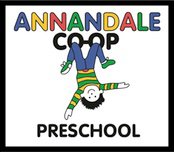Food Allergy Fundamentals
Even if your child is not one of the 11 million Americans affected by food allergies, she will undoubtedly share a classroom at some point with children who are. The prevalence of food allergy has risen dramatically in the past decades. Today, 6-8 % of young children have a food allergy, as do 3-4% of adolescents and adults. Because of the potentially life-threatening nature of some food allergies, it is important for all parents to be informed. This article will explain the basics.
What is a food allergy?
A food allergy occurs when a person’s immune system mistakenly attacks harmless food proteins, causing an allergic reaction. When a person eats the food they’re allergic to, tiny molecules called IgE (immunoglobulin E) antibodies (which are produced by the bodies of food allergic people) attract the proteins from that food. The IgE antibodies are like tiny antennae that sit on “mast cells” which are spread throughout the body. When the food proteins attach to the IgE antibodies, the mast cells explode, sending chemicals, including histamine, throughout the body. These chemicals are what cause the symptoms of an allergic reaction.
What is the difference between a food allergy and a food intolerance?
A food allergy is very different from a food intolerance (such as lactose intolerance), which is described as an “adverse food-induced reaction that does not involve the immune system” (FAAN). Unlike food allergies, food intolerances do not result in death and are most often characterized by gas, bloating and abdominal discomfort.
Which foods are most likely to cause an allergic reaction?
While virtually any food can cause an allergic reaction in a particular individual, there are eight foods that account for 90% of the allergic reactions in the United States. These are peanuts, tree nuts (such as walnuts, pecans, etc.), milk, egg, soy, wheat, fish and shellfish.
What are the common symptoms of a food allergy?
The signs and symptoms of food allergy range from chronic, low-grade symptoms to acute, life-threatening reactions. The following are all symptoms of food allergy: hives, eczema, abdominal cramps, vomiting, tingling in the mouth, swelling of the tongue and throat, difficulty breathing and anaphylaxis. Anaphylaxis is the most serious reaction to a food allergy. It is a severe allergic reaction which involves several of the symptoms listed above. It can also include a drop in blood pressure, loss of consciousness and even death if not treated quickly enough. Any of the symptoms/reactions on this list can occur within minutes to hours of the ingestion of the allergen.
What is the treatment for food allergies/ anaphylaxis?
Currently there is no cure for food allergies. The only way to prevent a reaction is to completely avoid the food to which one is allergic. It is important to note that exposure to even the tiniest amount of food protein can cause a reaction, so contamination of a safe food with the residue of an allergen which shared the same preparation surface or equipment, for example, can cause a reaction. In case of an allergic reaction, a person with a food allergy should be injected with epinephrine as soon as possible. Epinephrine is a powerful antihistamine which can counter the effects of the histamines released into the body during an allergic reaction. People with severe food allergies carry injectible epinephrine (EpiPen) with them at all times. After using the EpiPen, call 911. The effects of the EpiPen last only ten to twenty minutes and symptoms may return. It is important for a food allergic person who has had a reaction to be seen by a doctor at the emergency room.
How can I keep a person with food allergies safe?
- Wash your hands and face thoroughly with soap and hot water after eating or handling known allergens, particularly peanuts and tree nuts. (Face washing is just as important as hand washing: even kisses can cause allergic reactions.)
- Clean surfaces and utensils used to prepare food for a person with food allergies to avoid cross contamination (which can occur when shared equipment is used to process or prepare food containing allergens and food that does not contain allergens). Lysol wipes, bleach-based cleaners and Formula 409 have been shown in studies to be effective at removing peanut proteins and residue from surfaces.
- Read labels on packaged and processed foods. Food manufacturers are required by law to list the top eight allergy-causing foods on their labels. Avoid not only food that contains the allergen but also foods that “may contain” the allergen or are “processed on shared equipment” with food containing the allergen.
- Do not offer any food to an allergic child (even if you think it is safe) without first asking their parent.
Can food allergies be prevented?
Researchers are still searching for the cause of food allergies. There is no conclusive evidence to explain why certain children develop food allergies while others do not. However, based on research findings, many allergists including Dr. Robert Wood, MD, of Johns Hopkins University recommend the following guidelines to decrease the chance of food allergy development in young children:
- Avoid peanuts and tree nuts during pregnancy and while breastfeeding.
- Supplement breastfeeding when necessary with a hypoallergenic formula.
- Delay the introduction of solid foods until 6 months of age.
- Delay the introduction of milk and egg until one year of age.
- Delay the introduction of peanut and tree nuts until three years of age.
- Practice early intervention if signs of food allergy appear.
What should I do if I suspect my child may have a food allergy?
Make an appointment with an allergist as soon as possible and avoid the suspected allergen(s) until after the appointment. Most pediatricians are not qualified to test for food allergies, so it is very important to see an allergy specialist. There are two common tests used to diagnose food allergy. One is the skin-prick test in which small droplets of common allergens are placed on the skin and then scratched into the skin to test for a reaction. The other is a blood test called the RAST (radioallergosorbent test) which tests IgE antibody levels for particular foods.
How are food allergies handled at our preschool?
Annandale Cooperative Preschool is a peanut-free school. This means that you may not bring any peanuts or products containing peanuts to school for snack. It also means that you many not send any peanut products in your child’s lunch when he or she stays for Extended Day. If your child has a food allergy, be sure to make your child’s teacher and the Director aware of the allergy. Let them know the type of reaction your child may have and the foods that should be avoided. Your teacher will communicate this information to the rest of the parents in the class. In some cases, you may need to provide an alternative snack for your child.
Also be sure that any medication your child may require to treat an allergic reaction (such as Benadryl or an Epipen) be kept at the school with the appropriate paperwork.
For more information on food allergies, check these resources:

